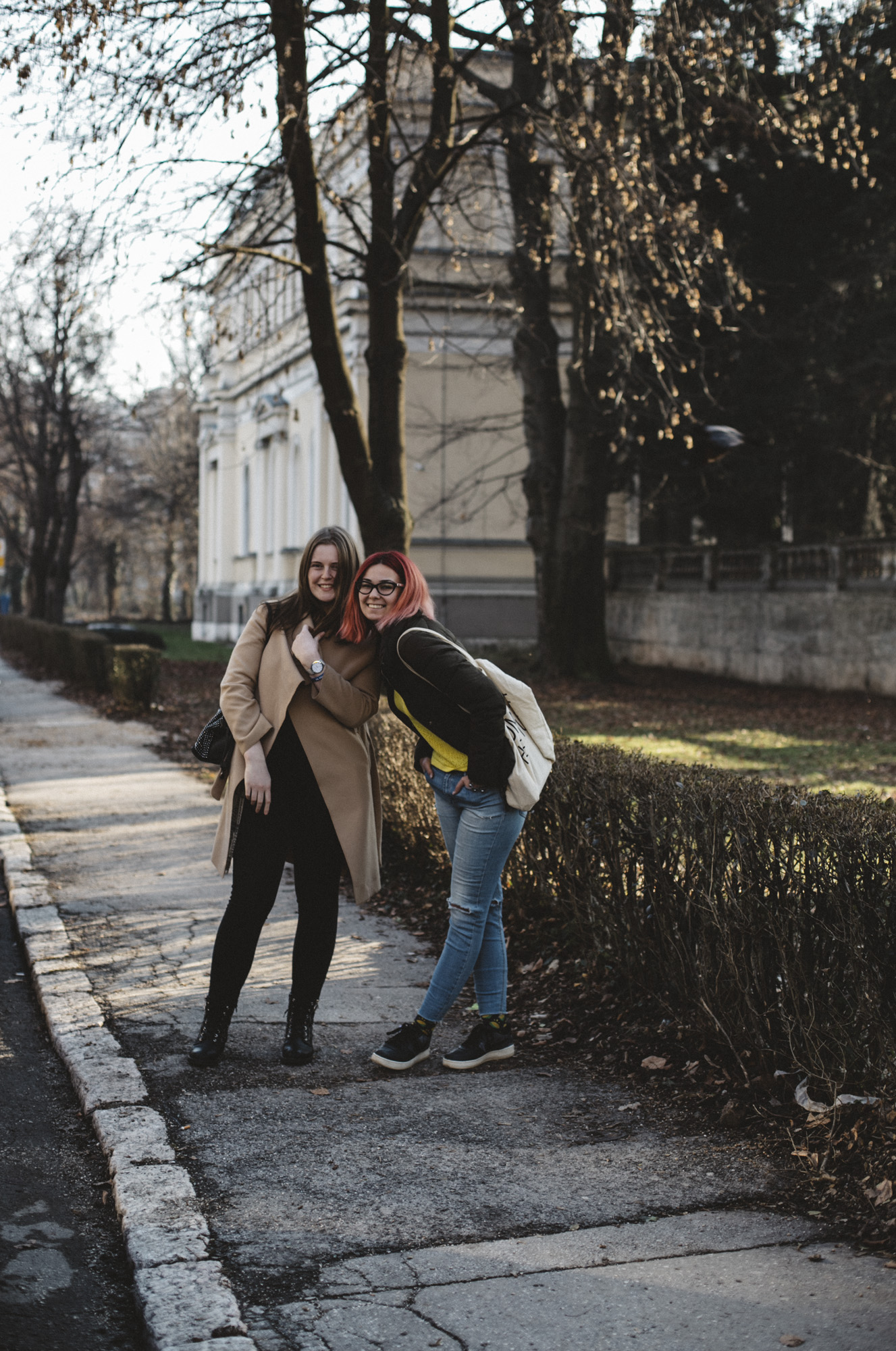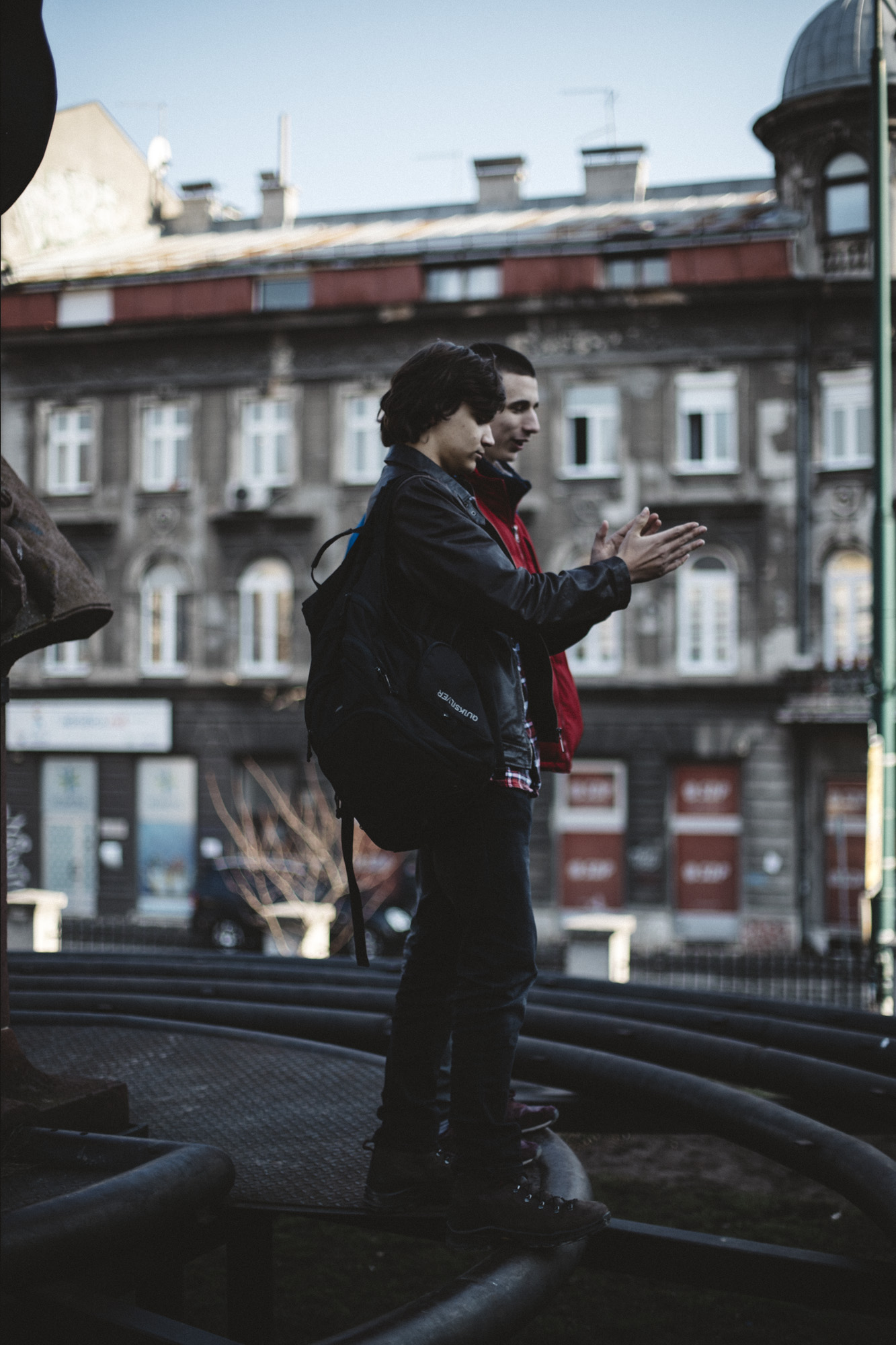Discovering enchantment in the Sarajevo of now
Almost twenty-five years after the war, Sarajevo is becoming a city of peace. A generation of young creatives, entrepreneurs and artists is bringing in an optimism and an international outlook. Long enchanted by this city, Melbourne writer Ennis Ćehić has returned to the capital of his native country to find the Sarajevo of now.
For some reason, I thought it was at the top of the sloped street. I held onto the green railing beside the pedestrian walkway, trying not to slip on the freshly frozen snow, and climbed all the way towards the Soviet-style blocks before I realised that was way off; I was looking for an Austro-Hungarian apartment block.
Mikica welcomed me on the fourth floor outside the apartment I came to inspect. Her short red hair was dyed, but it made her look younger, and opened up her optimistic, motherly grin. She ushered me inside to get out of the cold foyer, and within a few minutes, as she showed me the bathroom and the bedroom that came off the hallway, I learnt more than I intended to about Mikica’s life. This was her son’s apartment. “He works at the Bosnian embassy in Germany now,” she said with a mother’s pride. Her son is married to Sharif, a woman who is Syrian from her mother’s side. They have two kids and come to stay with her in summer. By the time we got to the living room, Mikica told me she had lived in the apartment on the corner of the same floor since she got married in the early 1960s. “This,” she said poignantly, pointing at a small, still-life of cherries on the wall in the living room, “is my work. My husband said art will be the thing I leave behind after I die.” She opened the French doors that led into a small dining space off the living room, and drew the curtains aside, revealing large, open windows with 180-degree views of Mejtaš, the mahala (neighbourhood) of Sarajevo that led up the sloped street I walked on earlier. Miljenko Jergović, one of Sarajevo’s famous authors, calls Mejtaš “a square above the city”: it is considered one of the city’s most pristine neighbourhoods. A week later, I moved in.

Like Mikica, people are always telling you stories in Sarajevo. The city is steeped in narratives, legends and tales. Even its birth has a story. Founded originally by the Ottoman Empire in the 1450s, Sarajevo lies in a scenic valley in the middle of the Dinaric Alps. The cemetery Ravne Bakije, on top of the mahala Sedrenik, is located where legend tells us the great Sultan Mehmed II, enchanted by the view of the valley, dismounted his horse and exclaimed, “Bak, bak!” (“Look, look!”). This ancient anecdote, a minuscule slice of the biography of Mehmed the Conqueror, the Ottoman Sultan who occupied Bosnia and Herzegovina and changed its history forever, is the one I like the most.
When I first came to Sarajevo on a holiday in 2013, it had been 21 years since the war had exiled my family out of our homeland. I hoped returning to Bosnia and Herzegovina and its capital would represent a cultural reconnection, but it also represented an emotional, heartbreaking journey. While the mahalas line the valley like a protective armour, the mountains tower over the pulse of the city below. When one realises how open and susceptible it is to attack, it makes one recoil at the reality of the siege that occurred here between 1992–95, when Serbian soldiers encircled it from the mountains, shooting down and shelling.
Now, in 2019, my reason for coming back is entirely different. After selling my apartment in St Kilda East in November 2018, and receiving an award to write my first book in the same month, I decided to move here. It’s a change I looked forward to with great curiosity. I was transitioning to having no day job, with my entire time devoted to my writing practice, so immersing myself in the capital city of my motherland felt like the right thing to do. After all, you can’t know yourself if you don’t know your own history.
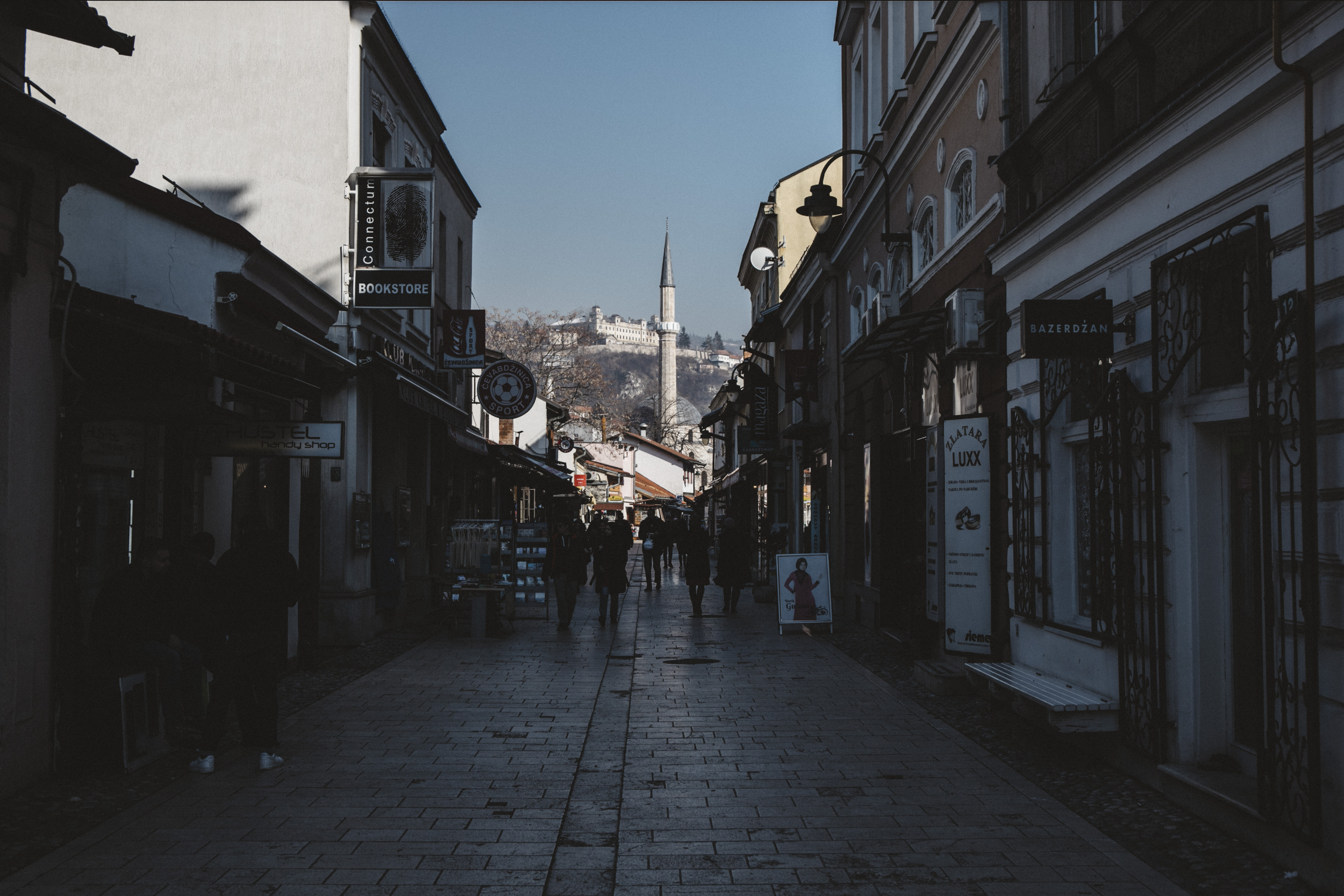
There was a period in my life when I listened more to reply than to understand. Now, it’s the opposite. Since I’ve arrived, I’ve noticed how Sarajevo seeks out my attentiveness. It’s as if people see that I am lingering for narratives, for stories. Each time I leave my apartment, I sense my body moving at a slower pace, as my feet saunter aimlessly through the streets. Almost weekly, I discover new cafes, historic buildings, bookshops and stores I previously never encountered; and with most stops, I discover something about Sarajevo. At the Gazi Husrev-beg Mosque and fountain in the Baščaršija, I smile when I think of the old song that asserts that once you drink Baščaršija water, you never forget Sarajevo. This story is told to travellers to the city, to remind them that, one day, despite what they might think, they’ll return.
“Have you heard the one about McDonald’s?” said a waitress recently. Supposedly, a local, carrying a full plate of ćevapčići, the traditional Bosnian street snack, entered the fast-food store when it opened in 2011 and handed the plate over to the staff, wishing them well and welcoming them to the neighbourhood.
After the first month of being here, I also heard a great deal of Sarajevo’s famous war tales. The square in front of the National Theatre is named after Susan Sontag, who, in 1993, in the middle of the siege, staged the play Waiting for Godot here. When the creeks dried up and the rivers became polluted, and both water and power lines were sabotaged, Sarajevska Pivara, a brewery located atop an underground natural spring, pumped water and distributed it to locals who arrived with buckets and whatever else they could carry, hiding from snipers.


But in the five years I had been absent, I also noticed that many new buildings had been erected and institutions re-opened. The city hall Vijećnica, the most famous of Sarajevo’s buildings, designed by Czech-born architect Karel Pařík, who spent most of his life in Sarajevo, re-opened in 2014. This was a historic moment for the city, as Vijećnica housed the country’s entire historical archives, and had been burnt down during the siege. The National Museum of Bosnia and Herzegovina opened its doors again after an embarrassing period of closure between 2012–15, due to disagreements about funding. After a 26-year hiatus, the famous Trebevićka žičara, a cable car that leads people up to Mount Trebević, finally re-opened in 2018. Other developments, such as the Sarajevo City Centre, a shopping complex and hotel in Marijin Dvor, which opened in 2014, brought the world closer, with fashion conglomerates such as Zara coming to Bosnia and Herzegovina for the first time.

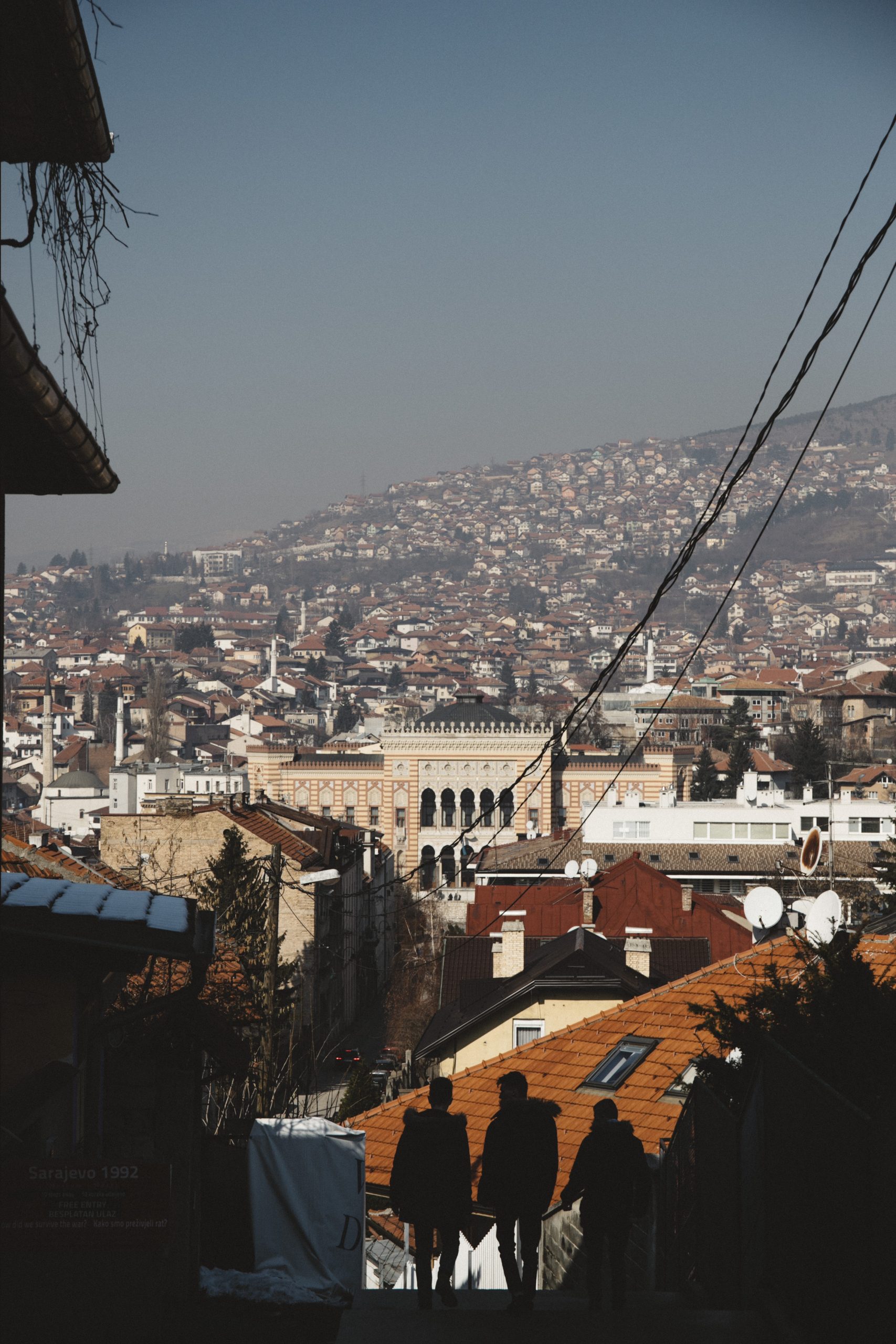
Transitions, I noticed, always have a catalyst point; a beginning, from whence adjustment and transformation occurs. Sarajevo’s catalyst is the siege that occurred here, considered the longest and worst in European history since World War II.
The city exists before and after the war, both in its stories and in its urban texture. “What was it like before?” is a question many tourists ask the local tour guides. I had asked my parents this same question, too young to know what it felt like to live in the Federation of Yugoslavia. Those who had experienced Sarajevo before the war always spoke of it nostalgically. They recalled the greatness of a remarkable music, literature, art and film scene – especially of the 1980s, when Sarajevo hosted the winter Olympics.
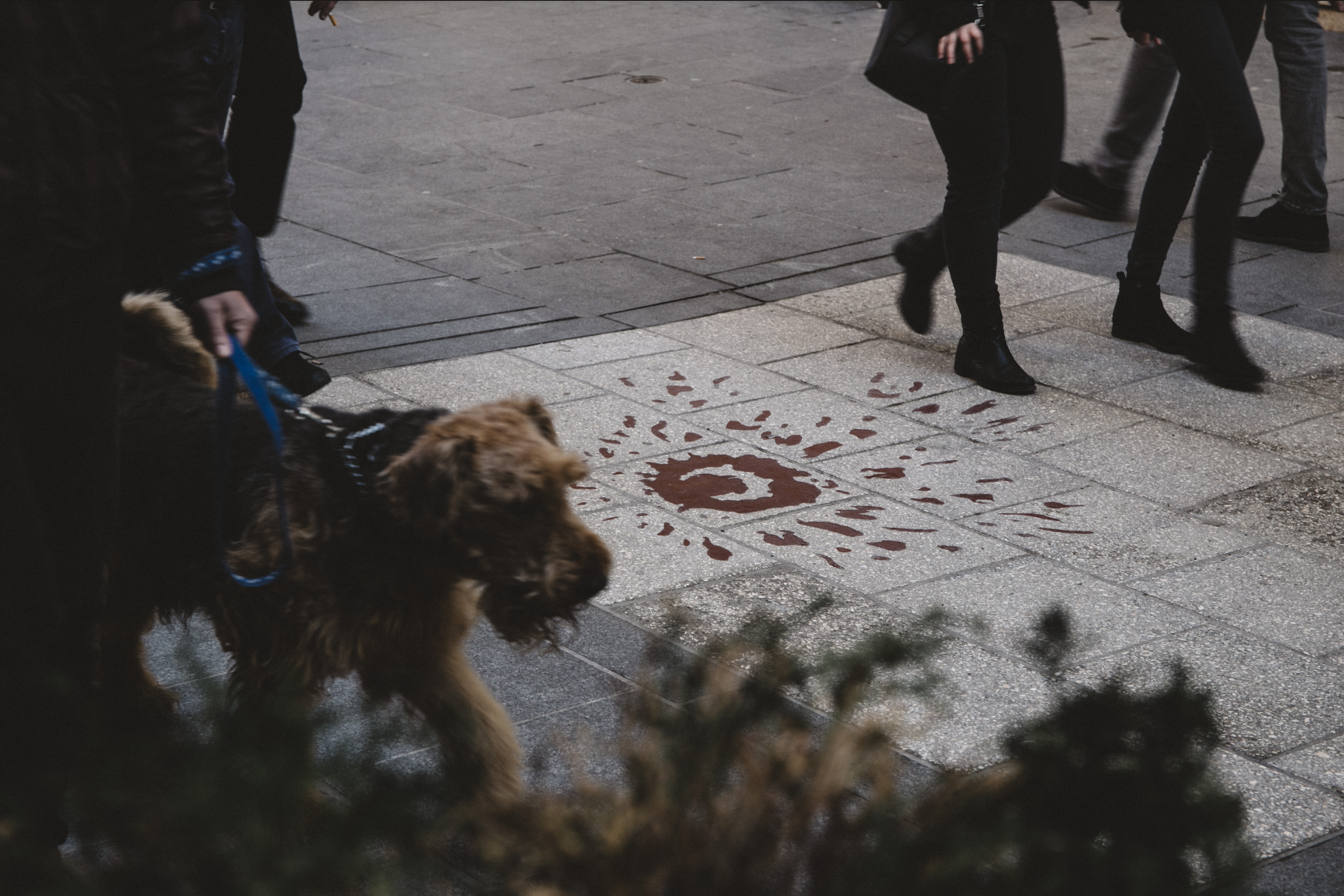
It’s obvious that the city doesn’t let go of the marks of the siege – the scars I see across the neighbourhoods on my walks are constant reminders. There are still remnants of the war, wounds from shells and bullets, that have not been tended to. If they have been nursed and patched, it’s been done with minimal effort – blotches and splashes of concrete – as if the city wants you to remember the terrible fate it endured. And yet, these remnants are starting to become part of the new urban fabric. As I stroll through Baščaršija, Ferhadija and lead outwards into the newer territories like Čengić Vila, the transition isn’t visible only in the new buildings, state-of-the-art offices, great restaurants and the appearance of fashion conglomerates. It is most vividly present in the youth, in their optimism. The young people I meet for coffee and chat to about Nick Cave, Virgil Abloh and Drake are not stuck in ‘Yugonostalgia’. Instead, I sense a desire to move on from the war and its ramifications: they want to further the city’s current uniqueness, its revival as a modern capital.
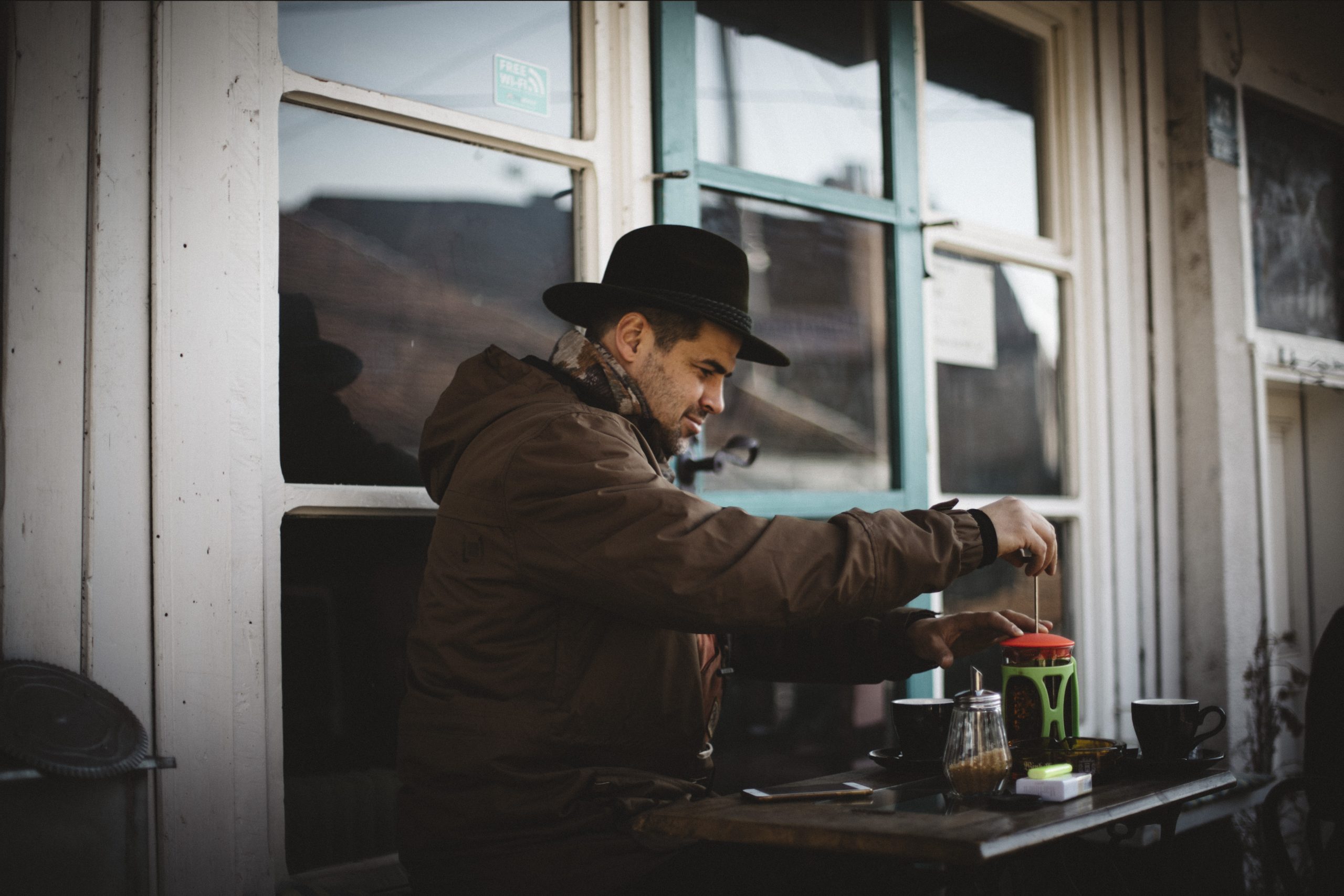
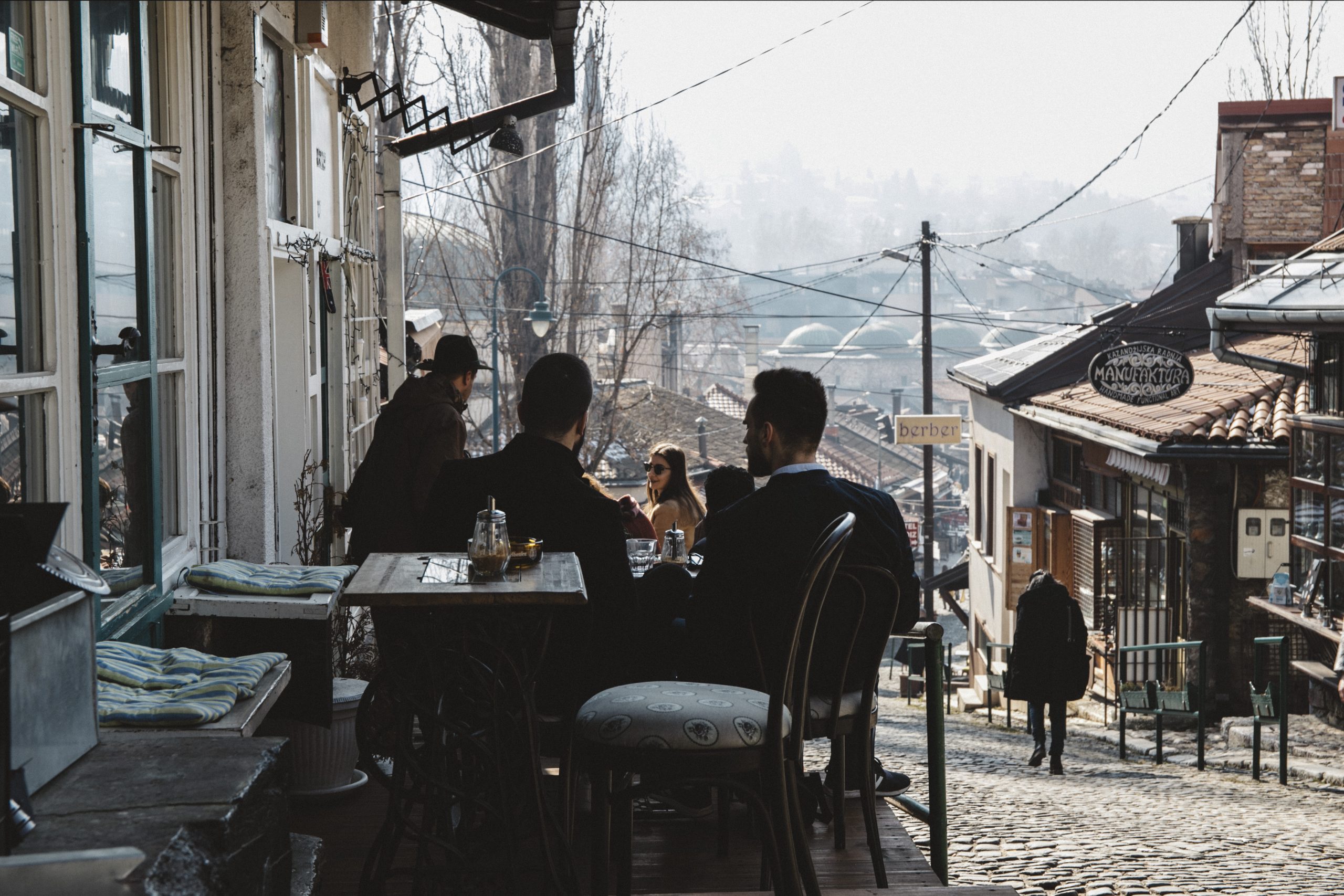
Zana Karkin, a young fashion entrepreneur, opened up Bazerdžan in 2016, a concept store that exclusively offers designer wares and products made by Bosnian makers. “We have a team of artists working in the shop, who all contribute creatively to the process. We work with over 40 traditional craftsmen and new, young designers to create products that speak of our Bosnian story with modern interpretations,” she told me. Ministry of Ćejf, the first specialty coffee roaster and café in the city, has brought Melbourne-inspired coffee culture. The owner, Reshad Strik, is an Australian-Bosnian who moved here a few years ago. While these initiatives might seem small, they are great leaps for a place that is still soaked in post-war suffering. They might be the early, pioneering inspiration the city needs to peel away the layers of its gruesome past.
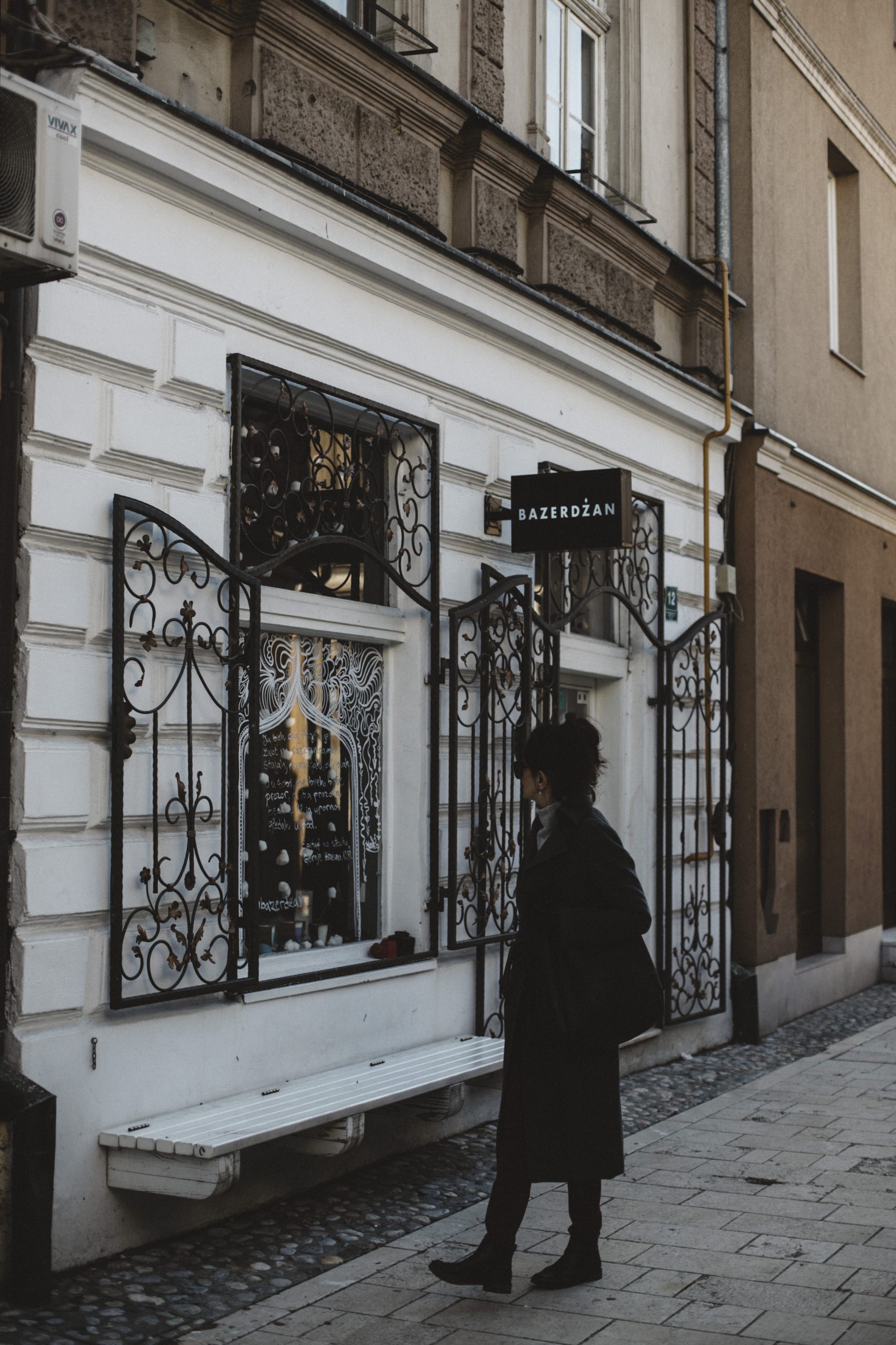
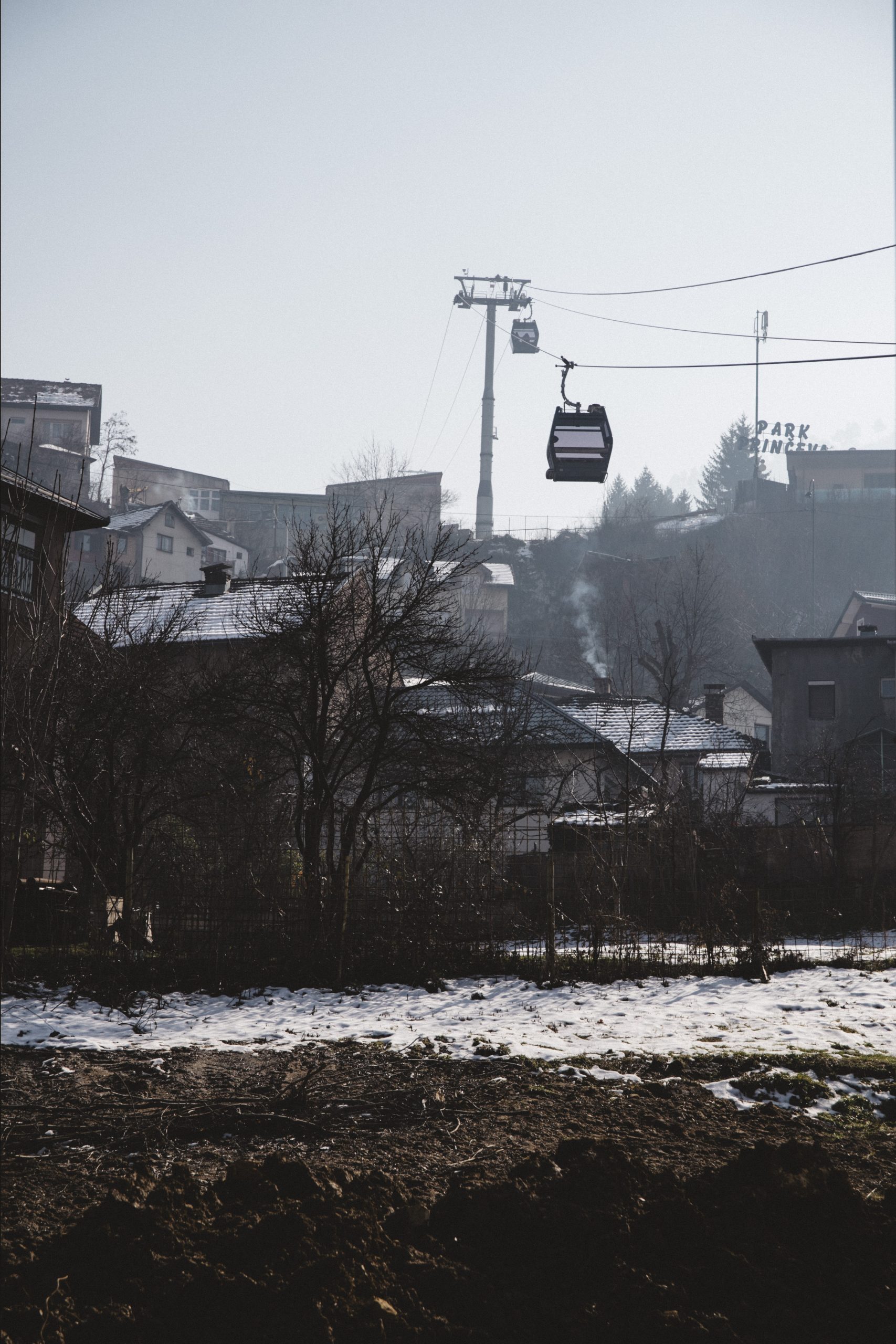
The other day, I had coffee with Damir Imamović, a singer and songwriter of sevdah music. Many consider Damir to be the leading figure of the emerging New Sevdah movement, which uses modern interpretations and instrumentation of this traditional Bosnian folk music. We met at Delikatesna Radnja on Obala Kulina Bana, across from the Miljacka River. It was a warm winter’s day, and the bar was full of people. As I began to tell him how much I’ve come to adore this city, Damir leaned back into his small armchair and remarked how it’s never been greater: “There’s never been this many film directors, writers, musicians, a film festival, theatre and literature with so much international recognition in Sarajevo,” he said. “We didn’t have this before the war.”
After he left, I looked around at the buzz of the bar – the fashionistas in Adidas tracksuits and fur jackets, and the cool, Berlin-like décor. Perhaps Damir was right: cruelties of the war may have catalysed an international interest in Sarajevo that has spawned a new age.
I headed home. Inside Mikica’s dining room (converted into my writing studio), I looked through the windows. The snow had melted off the rooftops in Mejtaš, and now it was only visible up further, in the mountains. I reflected on Sarajevo’s identity, how individual it has been throughout history, born from the harmonious co-existence of the monotheistic religions that exist here.
Every journey we take in life is a journey within. We look outwards for clues, but the resolute verdict we discover comes from within. This city has always been a beautiful concoction of East and West, and the music of sevdah has captured this wonderfully. And much like the progressive, musical changes that sevdah is experiencing, so is this city refashioning itself. Its ‘before the war’ motifs are no longer what’s pulling the strings of my curiosity. I’m not as interested in the stories of before; like many others, I am enticed and captivated by the Sarajevo of now.

A warm thank you to Ennis for this tour of Sarajevo, one of our favourite articles from the 11th print issue of Assemble Papers: Transitions. If you are lucky enough to visit Sarajevo, make sure to drop by Reshad Strik’s Ministry of Ćejf, where you can also pick up a print copy of Assemble Papers.


